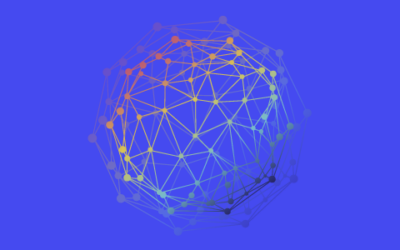What People Need Right Now, And How Brands Can Support Them
(Part 1 of a 4–part blog series helping brands think like real people)
In any time of accelerated – and turbulent – economic and societal change, it can be difficult for brands to understand how the people they serve are both coping with and reacting to these developments, and how it may be impacting their future plans.
Amid current pandemic emergence and economic uncertainty, consumer mindsets are evolving again.
At GutCheck, we believe that a holistic understanding of the people who use your products and services is critical to establishing the deep, empathetic connections between people and brands that will sustain and grow your business.
That’s why, in our analyses and recommendations, we focus on a key set of latent psychological and emotional factors that influence the connections between brands and people and ultimately affect usage and purchase behavior.
We refer to this as Agile Human Experience Intelligence™ (HXI) with a special focus on the factors identified in Figure 1.
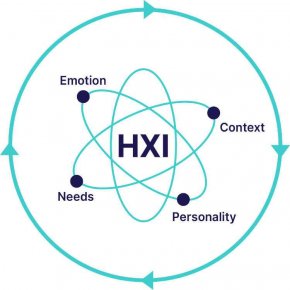
Figure 1. Key Factors in Human Experience Intelligence
In this and subsequent posts, we will discuss each of these four elements and illustrate how they help us get below the surface level of today’s political, social, and economic trends so we can be more empathetic to those who buy and use our products and services.
Universal Needs
First up, let’s take a look at the universal need component of Human Experience. A need is a requirement for something essential or important. Unmet or under-met needs influence behavior by motivating people to take action to obtain what they require for stability and growth.
Needs operate at multiple levels (ongoing/continuous versus acute/immediate) and can change based on the context. In this post we will focus on universal human needs that, according to psychologists like Maslow and global insights practitioners like Ford, serve as foundational motivations for human behavior. These universal needs are shown in Figure 2.
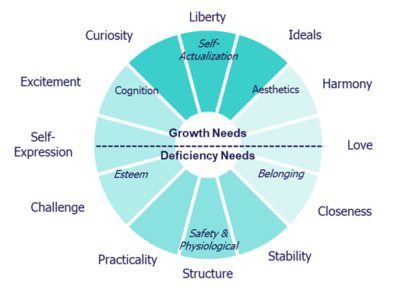
Figure 2. Universal Human Needs
The lower half of this diagram shows what Maslow called the ‘deficiency needs’ for basics like security and physiological factors, as well as for psychological factors such as love and belonging and a sense of esteem and challenge. The upper half shows the growth needs – cognitive and aesthetic needs that lead to personal growth and self-actualization.
Depending on the context, the most salient or pressing needs that people have can fluctuate from growth to deficiency and back again. And basic physiological and security needs must be satisfied before a person can spend much time addressing other needs.
Where Are People Now?
The broader context includes a multi-year pandemic, stock market volatility, rising gas prices, increased job availability, gun violence, overall inflation, and fewer required COVID-related restrictions. Given all the recent and current upheaval, which needs are most salient to people in the U.S. today?
Our most recent “GutCheckononics” results show that, on average, people across all generations and household income groups are operating from a place of deficiency. As depicted in Figure 3, their top needs are to be close and connected to loved ones (closeness need) and to have their self-esteem bolstered by achieving progress on their goals (challenge need).
In short, people are currently highly motivated to increase intimacy with friends, family, or others they care about and to put some tallies in the win column.
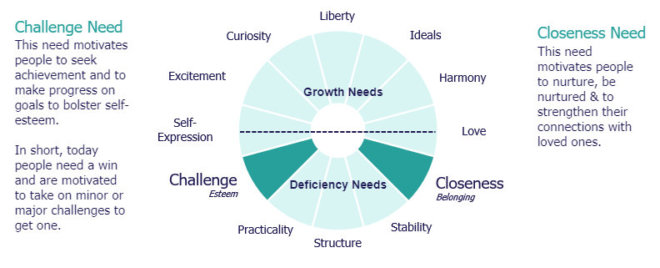
Figure 3. Deficiency Needs
We see these needs articulated clearly in people’s written responses:
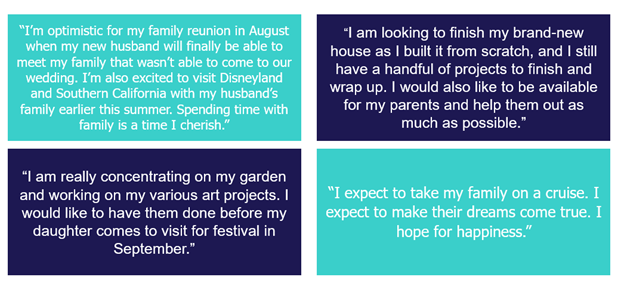
How Can Brands React And Demonstrate Empathy?
Brands & Challenge Needs
Empathetic brands should highlight ways their products & services help people master day-to-day challenges or build self-esteem. Providing how-to tips, instructional videos, recipes, etc. that help people successfully use your products or services to achieve their goals may be especially valuable.
Brands & Closeness Needs
Brands that connect people physically or virtually should ensure their customer service agents are well-trained to empathize with those who need their support this summer. Because of travel restrictions or health concerns, people have hungered for improved connections for months or years.
Your teams shouldn’t excuse inappropriate behavior, but small kindnesses may go a long way. Other brands can show empathy by acknowledging the importance of close connections through imagery or messaging, provided it is authentically conveyed.
GutCheck’s Agile HXI framework and the work we are doing to understand the real people shaping and being shaped by the current trends helps brands get closer and stay closer to the people they serve. If you want your brand to thrive by innovating and communicating with empathy, let’s talk.
Coming Soon: Context – What impact are major social and political events having on people from different generations or in households with different levels of household income?
Study Details: GutCheck interviewed 1,008 adults on May 2-3, 2022, via an online survey. The sample was balanced on age by sex, region, and household income to census targets for the US 18-74 population. Universal needs were derived by applying Natural Language Processing to the responses to two open-ended questions – one on a recent experience and the other on imagination.
Written By
Want to stay up to date latest GutCheck blog posts?
Follow us on
Check Out Our Most Recent Blog Posts
When Vocation and Avocation Collide
At GutCheck, we have four brand pillars upon which we build our business. One of those is to 'lead...
Reflections on Season 1 of Gutsiest Brands
Understanding people is at the heart of market research. Sure, companies want to know what ideas...
Permission to Evolve with Miguel Garcia Castillo
(highlights from Episode #22 of the Gutsiest Brands podcast) Check out the latest lessons from our...
1-877-990-8111
[email protected]
© 2023 GutCheck is a registered trademark of Brainyak, Inc. All rights reserved.
© 2020 GutCheck is a registered trademark of Brainyak, Inc. All rights reserved.



